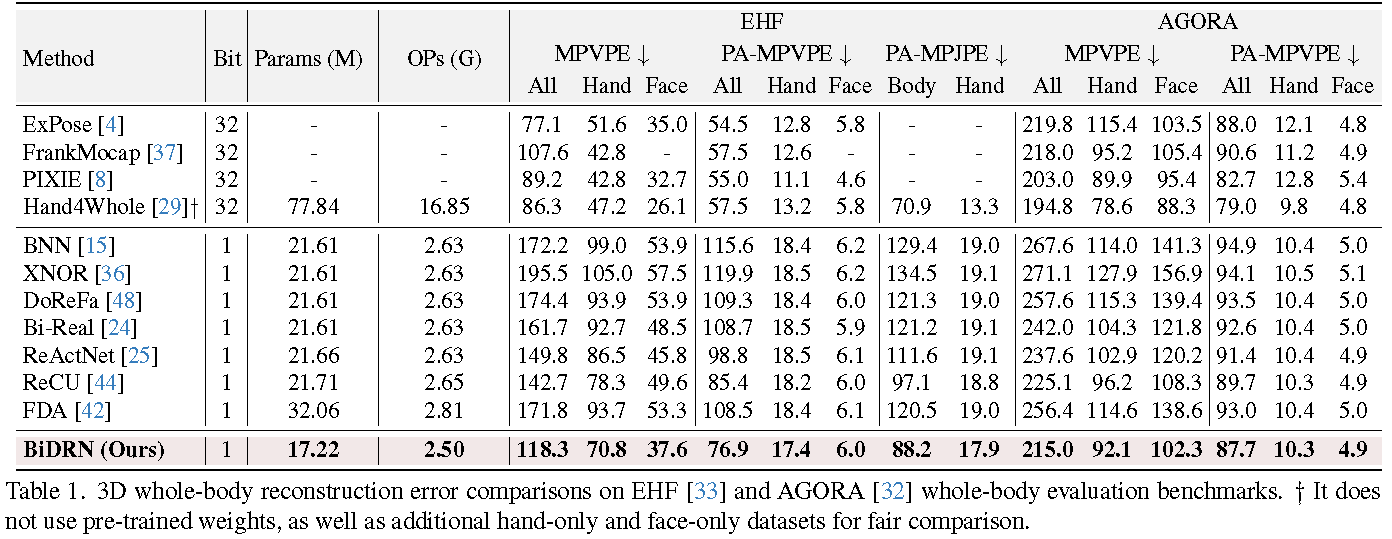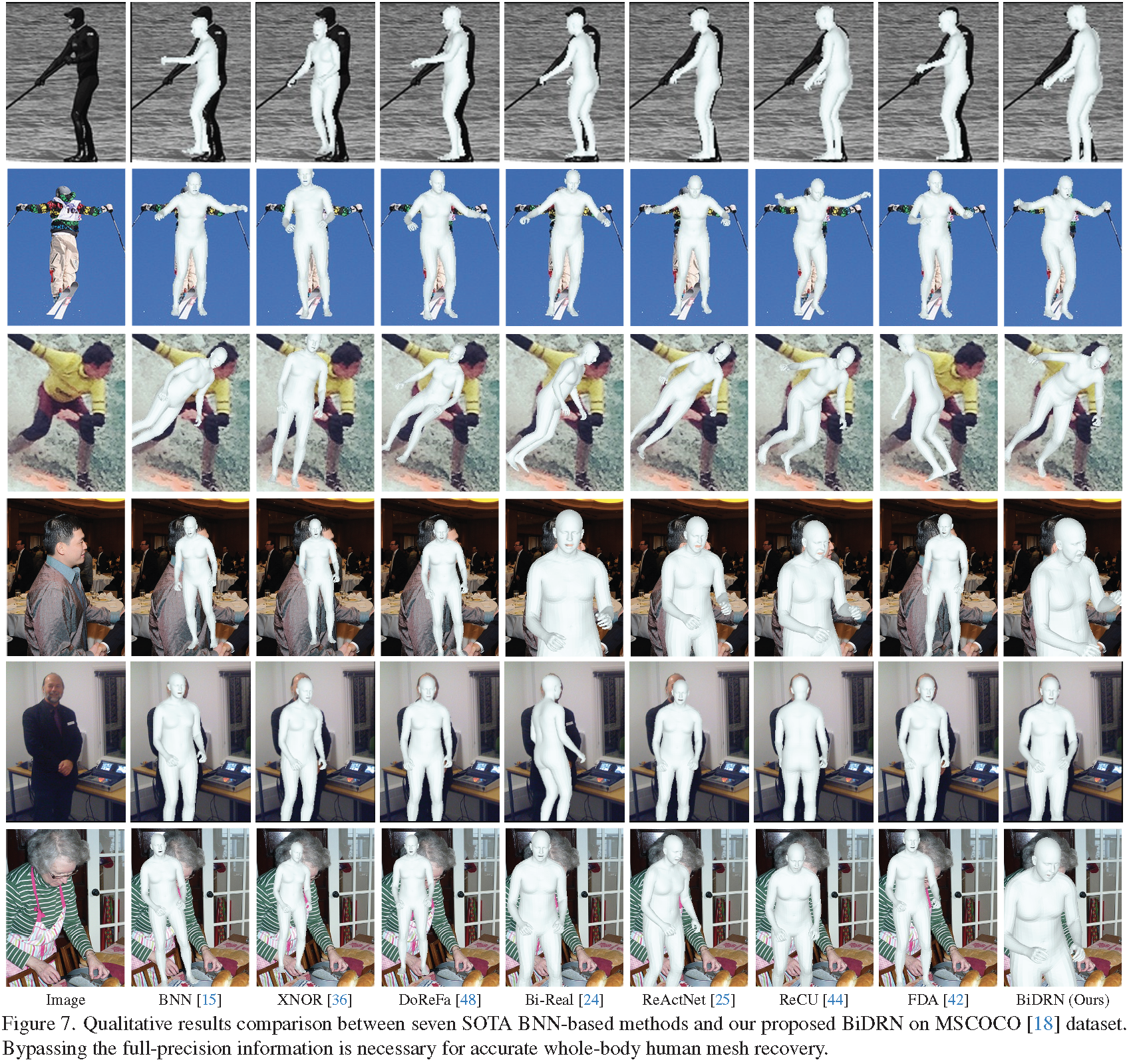Zhiteng Li, Yulun Zhang, Jing Lin, Haotong Qin, Jinjin Gu, Xin Yuan, Linghe Kong, and Xiaokang Yang, "Binarized 3D Whole-body Human Mesh Recovery", arXiv, 2023
[arXiv] [supplementary material] [visual results] [pretrained models]
Abstract: 3D whole-body human mesh recovery aims to reconstruct the 3D human body, face, and hands from a single image. Although powerful deep learning models have achieved accurate estimation in this task, they require enormous memory and computational resources. Consequently, these methods can hardly be deployed on resource-limited edge devices. In this work, we propose a Binarized Dual Residual Network (BiDRN), a novel quantization method to estimate the 3D human body, face, and hands parameters efficiently. Specifically, we design a basic unit Binarized Dual Residual Block (BiDRB) composed of Local Convolution Residual (LCR) and Block Residual (BR), which can preserve full-precision information as much as possible. For LCR, we generalize it to four kinds of convolutional modules so that full-precision information can be propagated even between mismatched dimensions. We also binarize the face and hands box-prediction network as Binaried BoxNet, which can further reduce the model redundancy. Comprehensive quantitative and qualitative experiments demonstrate the effectiveness of BiDRN, which has a significant improvement over state-of-the-art binarization algorithms. Moreover, our proposed BiDRN achieves comparable performance with full-precision method Hand4Whole while using just 22.1% parameters and 14.8% operations. We will release all the code and pretrained models.
| Image | Hand4Whole (full-precision) |
BNN | BiDRN (ours) |
|---|---|---|---|
 |
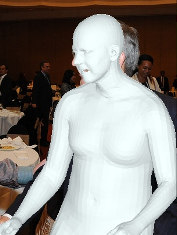 |
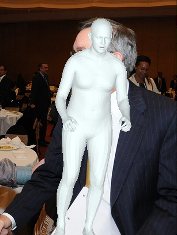 |
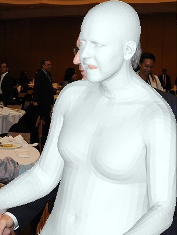 |
| Params(M) / OPs (G) | 77.84 / 16.85 | 21.61 / 2.63 | 17.22 / 2.50 |
- Complete this repository
- Datasets
- Training
- Testing
- Results
- Citation
- Acknowledgements
We outperform existing state-of-the-art BNN-based methods and even achieve comparable performance with full-precision methods. More results can be found in the paper.
Quantitative Comparison
- results in Table 1 of the main paper
Visual Comparison
- results in Figure 7 of the main paper
If you find the code helpful in your research or work, please cite the following paper(s).
@article{li2023binarized,
title={Binarized 3D Whole-body Human Mesh Recovery},
author={Zhiteng Li and Yulun Zhang and Jing Lin and Haotong Qin and Jinjin Gu and Xin Yuan and Linghe Kong and Xiaokang Yang},
year={2023},
eprint={2311.14323},
archivePrefix={arXiv},
primaryClass={cs.CV}
}
This work is released under the Apache 2.0 license. The codes are based on Hand4Whole. Please also follow their licenses. Thanks for their awesome works.

